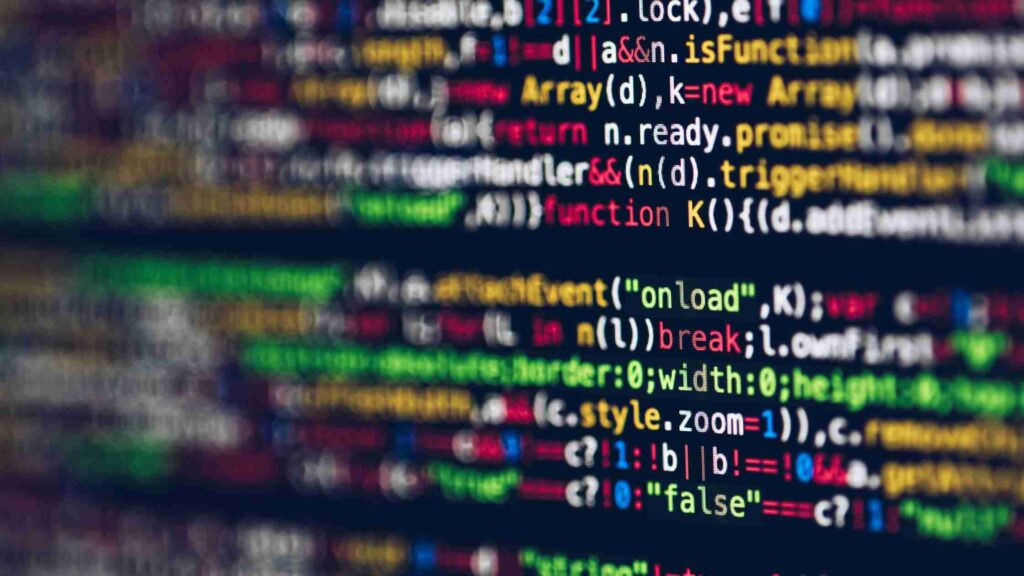Synthetic Data
What is Synthetic Data?
Synthetic data refers to information that is artificially generated rather than obtained by direct measurement or real-world observation. In essence, synthetic data mirrors the characteristics of real data without containing any actual elements from the real world. It is created through algorithms and models designed to replicate the statistical properties of a real dataset. Synthetic data can be used in various fields, such as software development, AI training, and research, where obtaining real data might be difficult, costly, or present privacy risks.
The rise of machine learning and artificial intelligence (AI) has led to an increase in the use of synthetic data, as these systems require vast amounts of data to function effectively. Synthetic data enables developers to train models without relying solely on real-world datasets, which can be limited or contain sensitive information that requires heavy protection.
Synthetic Data Synonyms
Synthetic data is sometimes referred to by other terms, though they all revolve around the same core idea of generating artificial data that closely mimics real-world data. Some common synonyms include:
- Simulated data
- Artificial data
- Generated data
- Mock data
Why is Synthetic Data Important?
Synthetic data plays a crucial role in modern data science, AI, and software development due to several key factors. First, it addresses the privacy concerns associated with real-world data, particularly in sectors like healthcare, finance, and security. When working with sensitive data, synthetic alternatives can be used to avoid the risk of exposing personally identifiable information (PII) or confidential business data.
Moreover, synthetic data is instrumental in situations where real data is scarce or difficult to obtain. In such cases, it allows developers and data scientists to proceed with their work without waiting for real data to become available. This flexibility helps expedite the development of algorithms and models, improving innovation cycles.
When is Synthetic Data Used?
Synthetic data is used in a wide variety of scenarios where real data may be inaccessible, insufficient, or restricted. Some of the most common use cases include:
- AI Model Training: Synthetic data is invaluable in training AI systems that require vast datasets. Whether for autonomous vehicles or natural language processing (NLP), AI models benefit from synthetic datasets that allow for a more diverse training environment.
- Software Testing and Development: Developers use synthetic data when testing new systems or applications. It allows them to test software functionalities without compromising security or privacy.
- Medical Research: In healthcare, synthetic data is used to simulate patient records, medical history, and diagnostic tests. It helps researchers study medical conditions and treatment responses without exposing sensitive patient data.
- Financial Systems: Synthetic datasets allow financial institutions to test fraud detection algorithms, conduct stress tests, and analyze customer behavior without using real account data.
- Simulation Environments: For robotics and autonomous systems, synthetic data helps create simulation environments where machines can learn and adapt without the need for real-world testing.
Synthetic Data and Privacy
One of the major advantages of synthetic data is the protection of privacy. Since synthetic datasets do not contain actual user or customer data, they eliminate the risk of exposing sensitive personal information. This is especially important in industries governed by strict privacy regulations, such as the GDPR in Europe and HIPAA in the U.S.
However, synthetic data must still maintain certain characteristics of the real data it replaces to be useful. If it fails to accurately reflect the underlying patterns, trends, and distributions of the original dataset, its utility diminishes. Ensuring that synthetic data strikes the right balance between privacy and accuracy is one of the core challenges in generating it.
Synthetic Data vs Real Data
When comparing synthetic data to real data, the primary difference lies in the origin. Real data is collected directly from real-world observations, experiments, or user interactions. This makes real data inherently authentic but also introduces issues of scarcity, cost, and privacy.
Synthetic data, on the other hand, is artificially generated to simulate real data. While it offers the benefit of avoiding privacy risks and being easier to generate in large quantities, it may not always capture all the complexities of real-world data. Therefore, synthetic data is best used in conjunction with real data to improve model accuracy and performance.
In summary, synthetic data vs real data highlights a trade-off between convenience and authenticity. Synthetic data offers flexibility and privacy, while real data provides undeniable accuracy and relevance.
Software Development and Synthetic Data
Synthetic data has become a cornerstone in the realm of software development. It allows developers to simulate user behavior, test applications under various conditions, and ensure robust data handling processes without relying on real user data. From frontend user interface tests to backend systems development, synthetic data makes it easier to identify bugs, security vulnerabilities, and potential performance issues during development phases.
Moreover, synthetic data can be used to test how software interacts with diverse and rare datasets, which may not be readily available in the real world.
Test Data Management and Synthetic Data
Test data management is another field where synthetic data shines. Managing data for testing purposes is often complicated by privacy concerns and limited access to real-world datasets. By using synthetic data, organizations can ensure that their testing processes do not compromise sensitive information while still accurately representing the scenarios that the system will encounter in production.
In addition, synthetic test data allows for comprehensive testing scenarios that may be difficult to replicate with real data, such as simulating edge cases or stress testing systems with high data loads.
What are the Benefits of Compliant Synthetic Data?
Compliant synthetic data offers several benefits, especially in highly regulated sectors. It allows organizations to use data for testing, analysis, and development without violating privacy regulations. This opens the door to more flexible, secure, and innovative software development processes.
Furthermore, synthetic data can be shared across departments or with third parties without the risk of breaching privacy or confidentiality agreements. This makes it an ideal solution for collaborating on projects that require large datasets, such as AI training or system integration.

What are the Common Challenges with Synthetic Data for Software Development?
While synthetic data brings significant benefits to software development, it also comes with challenges. One of the biggest hurdles is generating data that truly mimics the complexity and diversity of real-world datasets. Poorly generated synthetic data may lack the nuances and subtleties present in real data, which can result in inaccurate models, incomplete testing, and even system failures when the software goes live.
Another challenge is ensuring that synthetic data remains up-to-date with evolving real-world data patterns. Continuous updates to algorithms and models are required to ensure that the synthetic data used for development stays relevant.
What are the Compliance Challenges with Synthetic Data for Software Development?
Compliance is a key consideration in industries such as finance, healthcare, and government, where synthetic data is often used. While synthetic data helps bypass many privacy and compliance issues by avoiding the use of real data, it is not entirely free from compliance concerns. Regulatory bodies may require organizations to demonstrate that their synthetic data faithfully represents the original data while adhering to privacy standards.
Additionally, when used in regulated environments, synthetic data may still need to undergo rigorous validation and certification processes to ensure it meets the industry’s legal and ethical standards.
Data Anonymization vs Data Masking for Synthetic Data
Both data anonymization and data masking are techniques used to protect sensitive information, but they differ in key ways, especially when applied to synthetic data.
Data anonymization refers to the process of removing personally identifiable information from a dataset to protect individuals’ privacy. With synthetic data, anonymization is often not required because the data is not real to begin with. However, synthetic datasets should still maintain privacy by ensuring that they do not replicate any identifiable real-world data.
Data masking involves altering data in a way that obscures sensitive information while keeping the structure intact for testing or analysis. Masking is often used when working with real data, but with synthetic data, the need for masking is reduced because the data is inherently devoid of real personal information.
AI and Synthetic Data
Artificial intelligence and synthetic data are closely linked. AI algorithms often require vast amounts of data to train effectively, but acquiring and processing large datasets can be challenging. Synthetic data solves this problem by generating large-scale, representative datasets that enable AI models to train faster and more efficiently.
Additionally, AI can be used to generate synthetic data itself, creating highly realistic datasets that closely replicate real-world phenomena. This combination of AI and synthetic data is driving advancements in fields like autonomous systems, medical imaging, and natural language processing.
Synthetic Data for Software Development
In software development, synthetic data provides a secure, efficient means of testing and validating software without relying on real-world data. It is commonly used in the testing phase, where developers simulate user interactions, data flow, and system responses to various inputs. The flexibility of synthetic data enables the testing of software systems in a wide range of scenarios, from normal operations to rare edge cases.
Additionally, synthetic data helps improve software quality by allowing for continuous testing, enabling developers to catch and fix issues before they reach production.
Synthetic Data and Data Anonymization
Synthetic data often eliminates the need for traditional data anonymization methods, as it does not originate from real-world users or customers. However, in some cases, synthetic data may still need to undergo anonymization techniques to ensure it cannot inadvertently reveal patterns or characteristics that could be traced back to real individuals or organizations.
When used properly, synthetic data and anonymization techniques work together to protect privacy while ensuring that datasets remain useful for analysis and development purposes.
Synthetic Data and Database Virtualization
Database virtualization refers to the process of decoupling the database from the physical hardware that stores it, allowing for more flexible, efficient data management and usage. Synthetic data can enhance database virtualization by providing test datasets that simulate real-world usage without the need for real data, making it easier for organizations to test and manage virtualized environments.
Synthetic data also allows developers to experiment with different database configurations, stress test systems, and optimize performance, all without the risks associated with using real customer or business data.
Synthetic Data Best Practices
To maximize the benefits of synthetic data, organizations should follow certain best practices, including:
- Ensure data accuracy: Synthetic data should closely resemble the statistical properties of real data to be useful. Regularly validate the accuracy of synthetic data to ensure it aligns with real-world patterns and behaviors.
- Maintain privacy standards: Even though synthetic data is artificial, it’s essential to ensure that no identifiable information can be traced back to real-world individuals or organizations.
- Continuously update synthetic data: As real-world data changes, so too should the synthetic data used for development and testing. Regularly refreshing synthetic datasets ensures they remain relevant and useful.
In conclusion, synthetic data has become an essential tool for modern software development, AI training, and data management. Its ability to mimic real data while preserving privacy makes it a valuable asset in numerous industries. By following best practices and maintaining a balance between synthetic and real-world data, organizations can harness the full potential of synthetic data for their development and analytical needs.

